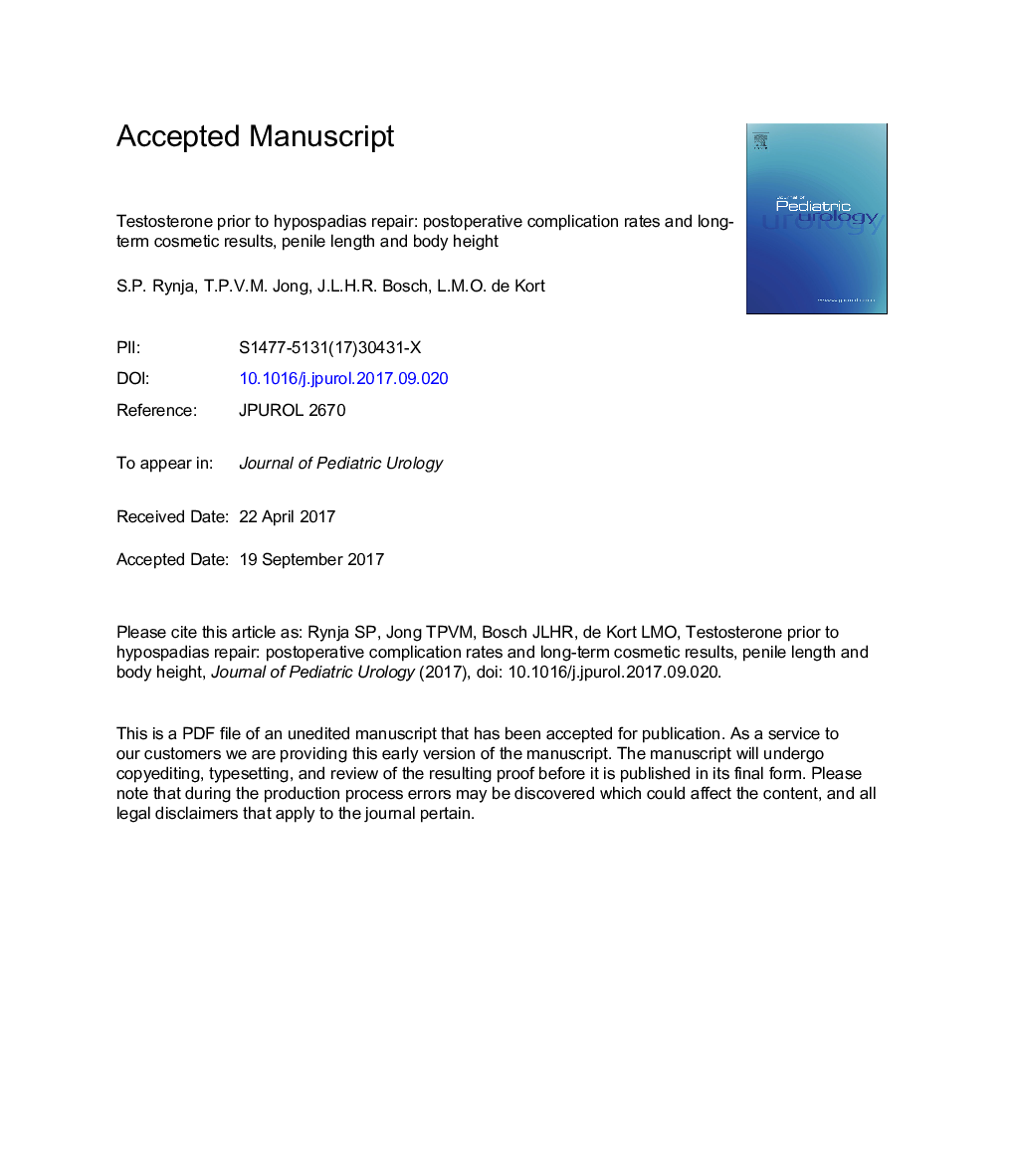| Article ID | Journal | Published Year | Pages | File Type |
|---|---|---|---|---|
| 8811715 | Journal of Pediatric Urology | 2018 | 25 Pages |
Abstract
This study suggested that the long-term results of patients receiving pre-operative testosterone treatment, who often had more challenging hypospadias, were similar to those who did not. However, a randomised controlled study is needed to confirm these results.Summary Table. Outcomes of multivariate regression analysis: impact of hypospadias severity versus pre-operative testosterone use on adult penile length and height, and cosmetic outcome measured by the Pediatric Penile Perception Score (PPPS).Outcome variableUnivariate analysisMultiple linear regressionPredictor variableRhoPβPCI (95%)Penile length (cm)Hypospadias typeâ0.48<0.01â2.9*<0.01â4.4 to 1.4**Testosterone useâ0.110.400.60.32â0.6 to 1.8Adult height (cm)Hypospadias typeâ0.130.33NSTestosterone useâ0.340.80NSOutcome variableUnivariate analysisLogistic regressionPredictor variableRhoPORPCI (95%)General aspect (PPPS)Dissatisfied vs. satisfiedHypospadias type0.110.41NSTestosteroneâ0.070.60NSHypospadias type ranged from distal (1), midshaft (2) and proximal (3) hypospadias.Testosterone use: no testosterone (0) versus pre-operative testosterone treatment (1).Pediatric Penile Perception Score (PPPS): (very) dissatisfied outcome (0) versus (very) satisfied outcome (1).Rho: Spearman's rank correlation.OR: odds ratio.*outcome for proximal hypospadias (1) compared to the remaining hypospadias subtypes (0).**R2, 019.
Related Topics
Health Sciences
Medicine and Dentistry
Perinatology, Pediatrics and Child Health
Authors
S.P. Rynja, T.P.V.M. de Jong, J.L.H.R. Bosch, L.M.O. de Kort,
